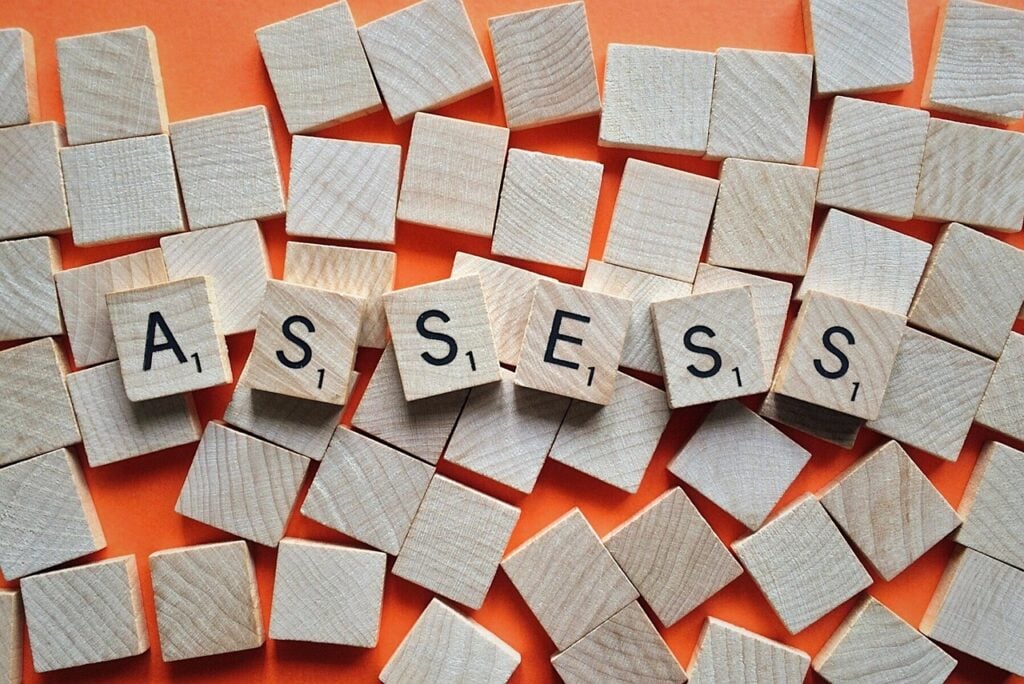Now Reading: How to Choose Small Business Insurance: A Practical Guide for Smart Owners
-
01
How to Choose Small Business Insurance: A Practical Guide for Smart Owners
How to Choose Small Business Insurance: A Practical Guide for Smart Owners

Did you know that one-third of small business owners with fewer than 50 employees don’t have any business insurance? Their businesses remain exposed to financial risks that could destroy everything they’ve built.
A single uninsured accident costs more than your monthly premium—it could wipe out your business completely. Your business’s structure, size, and legal requirements determine what type of insurance you need. The good news? Basic general liability coverage costs just $42 per month (about $500 yearly). This small investment provides the most important protection for your business.
Choosing the right business insurance that matches your small business needs can be tricky. We’ll explore everything in this piece. You’ll learn about different types of small business insurance and what coverage your business needs. Our guide helps you make smart decisions to protect your business’s success.
Understand Your Business and Legal Requirements

Image Source: https://pixabay.com/
You need to know about legal requirements and your company’s specific needs before buying business insurance. Many small business owners focus on getting their business up and running. They often skip over vital insurance decisions that could save their business from major financial losses.
Know what insurance is legally required
Federal law makes certain types of insurance mandatory for businesses with employees. These rules aren’t optional – you must follow them. Every business with employees must have workers’ compensation, unemployment, and disability insurance. Your business could face big fines and penalties if you don’t follow these rules.
Each state has its own set of insurance rules. Most states want businesses to get workers’ compensation insurance right after hiring their first employee. All the same, some states do things differently. To name just one example, Georgia only asks for this insurance when a business regularly has three or more people on staff.
Commercial auto insurance is a must in all states but New Hampshire and Virginia if your business uses vehicles. State laws decide how much coverage you need.
The law might not require general liability insurance, but you’ll need it in many business situations:
- Client contracts demand it
- Office space leases require it
- Professional license applications ask for it
On top of that, businesses selling alcohol usually need liquor liability insurance to get their liquor license.
Identify your business structure and size
Your choice of business structure affects your personal liability and the insurance you need. Each type of structure comes with its own risks that need specific coverage:
Sole Proprietorship: This basic business structure doesn’t separate your personal assets from business ones. Your personal belongings have no protection if someone sues your business. You’ll need detailed insurance coverage since you’re personally responsible for all business debts and obligations.
Partnerships: Just like sole proprietorships, general partnerships don’t protect your personal assets – they stay at risk. Partners should look into detailed business owner’s policies along with partnership coverage.
Limited Liability Companies (LLCs): LLCs give some personal liability protection. You still need general liability insurance and property coverage to protect what your business owns.
Corporations: These offer the best personal liability protection as separate legal entities. They still need directors and officers insurance to protect executives, plus general liability coverage.
Your insurance options also depend on your business size. Companies usually fall into these groups:
- Small businesses: Usually under 100 employees with up to $5 million in revenue
- Medium-sized businesses: 50-1,000 employees making $10 million to $1 billion yearly
- Large businesses: 500 or more employees
Small businesses can often get business owners policies (BOPs) that bundle several types of coverage into one affordable package. Your insurance needs will change as your business grows, and you might need more specialized or detailed coverage options.
Assess Your Small Business Insurance Needs

Image Source: https://pixabay.com/
Risk assessment builds the foundation of insurance planning that works. You might end up with inadequate coverage or pay for protection you don’t need without getting a full picture of what your business faces.
Evaluate your assets and liabilities
Your risk management starts with a detailed inventory of your business’s assets and debts. Start by tallying the value of all business assets, including equipment, inventory, and property. The balance sheet value comes from subtracting debts or liabilities. This gives you a starting point to review your business’s worth.
Asset valuation needs different approaches based on item types:
- Tangible assets include buildings, equipment, machinery, inventory, and vehicles
- Intangible assets cover brands, intellectual property, and customer data
Experts often apply the Depreciated Replacement Cost (DRC) method for specialized assets with no relevant market transactions to determine value. This complete valuation helps you understand what needs protection and the right amount of insurance.
Note that insurance can protect your business only when it addresses your specific risks. A full picture of both assets and exposures should go beyond tangible property to include intangible assets and external exposures like supply chain dependencies.
Consider employee-related risks
Employee risks create a major exposure area that needs careful attention. Workers’ compensation insurance stands as the most prominent form of protection. It covers medical care and rehabilitation for employees who suffer work-related injuries or illnesses.
Beyond injury protection, think over:
- Employment Practices Liability Insurance (EPLI) for claims alleging discrimination, wrongful termination, or harassment
- Health insurance benefits that attract talent while promoting workforce wellness
Small businesses face various liabilities, from wage and hour violations to workplace safety issues, discrimination claims, and intellectual property infringements. Clear, well-communicated policies set expectations and help alleviate these risks before they grow.
Reliable cybersecurity measures, secure handling of sensitive data, and compliance with relevant data protection regulations protect employee privacy. These precautions add to your insurance coverage yet remain separate from it.
Think about customer interactions and exposure
Each customer interaction shapes your brand’s perception and creates potential exposure. Businesses that focus on smooth interactions earn customer trust, yet these same interactions might reveal weak points.
Customer service problems often point to departmental issues, operational challenges, and possible liabilities. To cite an instance, a retail shop owner faces liability for damages, including medical costs, if a customer slips on a wet floor.
Your business must identify, analyze, and alleviate various risks that customers might create. This means knowing your customers’ identity, where they live and operate, and how complex their business structures are.
Your small business insurance should factor in how customers interact with your premises, products, and services. Professional liability insurance (often called errors & omissions) protects you from claims tied to mistakes that affect clients. This differs from general liability, which covers physical incidents.
A systematic approach to risk assessment identifies, analyzes, and reviews potential threats before taking steps to reduce their likelihood or effect. This directs both resources and insurance coverage toward your biggest concerns, ensuring your small business gets the right coverage without wasting money.
Explore the Types of Small Business Insurance
You need to understand what each type of insurance protects to select the right coverage. Let me walk you through the main types of small business insurance you should consider for your small business insurance guide.
General liability vs. professional liability
These two basic coverages protect against different risks. General liability insurance protects your business from claims that involve bodily injuries, property damage, and advertising injuries. Your general liability would cover the costs if a customer slips in your store or an employee damages a client’s property.
Professional liability insurance (also called errors and omissions) handles different issues – claims related to mistakes in your professional services that cause financial harm. You need this coverage if you provide advice, services, or expertise to clients. While general liability covers physical risks, professional liability protects you from claims of negligence, inadequate work, or missed deadlines.
Property and auto insurance
Commercial property insurance protects your business’s physical assets from fire, theft, vandalism, and certain natural disasters. This coverage typically protects:
- Inventory, tools, and equipment
- Furniture and computers
- Building structures (if owned)
- Business documents and records
Commercial auto insurance is something you must have in almost every state for business-owned vehicles. The coverage pays for third-party bodily injuries and property damage if your employee causes an accident while driving for business. Your personal auto policy won’t cover vehicles used for business operations, so this coverage is essential whatever your company’s size.
Cyber, product, and umbrella coverage
Specialized coverage becomes more important as businesses face new threats. Cyber liability insurance protects you from data breaches and cyber attacks. It covers expenses like legal counsel, customer notification, data recovery, and potential regulatory fines. Small businesses need this coverage more than ever since they’ve become targets for cybercriminals.
Product liability insurance covers claims that products you manufacture or sell caused bodily injury or property damage. You could be held liable for defects even if you just retail products made by others.
Commercial umbrella insurance gives you extra protection beyond your existing liability coverage limits. This additional coverage can be a great way to get protection when regular policies reach their limits, especially if your business deals with customers, works on others’ property, or allows public visits.
The right mix of these coverages depends on your business operations, industry risks, and growth plans.
Compare Insurance Providers and Policies
Reading insurance policies feels like trying to decode a foreign language. Small business owners need to identify their risks and understand coverage options. The next significant step involves comparing providers and policies to make smart choices.
How to read and compare policy terms
Insurance documents can run over 100 pages filled with technical jargon. The best approach focuses on specific sections rather than skipping these vital papers. The declaration page has essential details, including
- Your address and policy number
- Effective and expiration dates
- Premium amount
- Insurance company name
- Claims contact information
The “minimum retained premium” section appears on early pages. This section shows the non-refundable amount if you cancel mid-term. You’ll see this amount as either a fixed dollar figure or a percentage.
The coverages section outlines liability limits and deductibles. This section matters most since it’s the main reason you buy protection. Policy wordings might use complex insurance terms, but they define important concepts like named perils, insured property, and termination conditions.
What to look for in a provider
Insurance carriers differ in quality and service. Your professional network’s recommendations and online reviews are a great way to get insights. Quality insurers need both the commitment and expertise to handle specific industries.
The insurer’s financial stability ranks as the top priority. Companies rated “A” deliver better coverage, faster payouts, and reliable terms. An independent broker helps streamline this process. They request quotes from trusted companies and explain policy differences.
Understanding deductibles and limits
Deductibles show what you pay before insurance kicks in. Lower premiums often come with higher deductibles, which means more out-of-pocket expenses during claims. Make sure your business can handle the deductible amount before choosing a high-deductible policy.
Policy limits cap the insurer’s claim payments. Two main types exist:
- Per-occurrence limit: Maximum payment for a single incident
- Aggregate limit: Maximum payment for all claims during the policy period (usually one year)
Cheaper premiums might look appealing but often mean higher deductibles, lower coverage limits, or major exclusions. The right coverage balances cost with detailed protection for your specific business risks.
Looking beyond premiums reveals a policy’s true worth. A careful review of exclusions helps spot coverage gaps before you buy.
Make the Right Choice for Your Business
Making smart insurance choices protects your business without draining your bank account. You need to compare providers after identifying your needs. Then you can make choices that line up with your business goals and what you can afford.
Balance cost vs. coverage
Finding the right balance between what you can afford and proper protection matters most. You shouldn’t cut corners on business insurance. However, you can lower your premiums without sacrificing critical coverage. Higher deductibles usually mean lower premiums, but you’ll pay more out-of-pocket when filing claims. Make sure your business has enough financial reserves to handle potential claims before you pick a high-deductible policy.
Insurance costs keep rising for many reasons. In 2023, general liability claims costs jumped 15%—this is a big deal as it means that it went way beyond the 4% economic inflation rate. Despite these challenges, you should get coverage that fits your specific risk profile instead of buying generic policies. Paying a bit more for complete protection often saves you much more money down the road.
Bundle policies for savings
Bundling multiple insurance policies with one provider gives you several advantages:
- Lower premium costs through multi-policy discounts
- Easier management with single renewal dates and payment plans
- Fewer coverage gaps between policies
- Better customer service from long-term provider relationships
A Business Owner’s Policy (BOP) shows how bundling works well. It combines commercial property, general liability, and business interruption coverages into one package. This usually costs less than buying each policy separately. Some carriers give you up to 10% off when you bundle two or more policies.
Review and adjust annually
Your business keeps changing—and your insurance should too. Yearly insurance reviews help you spot dangerous coverage gaps and avoid paying too much for protection you don’t need. Set up reviews at regular times: before your policies renew, when your fiscal year ends, or whenever your business goes through big changes.
You should think about reviewing coverage when you:
- Hire more employees or grow your workforce
- Renovate property or upgrade equipment
- Buy company vehicles or add to your fleet
- Launch new products or services
- Add new technology or digital systems
These regular checkups make sure your small business insurance stays relevant as your company grows. This prevents costly coverage surprises when you need protection most.
Conclusion
Smart business owners protect everything they’ve built by choosing the right small business insurance. In this piece, we explore the key steps to secure proper coverage. Legal requirements based on your business structure help prevent issues that can get pricey. A full picture of risks—from physical assets to employee relationships and customer interactions—are the foundations of effective insurance planning.
The range of insurance types might overwhelm you at first. All the same, learning the differences between general liability, professional liability, property insurance, and specialized coverages like cyber protection helps you build a complete safety net. Looking beyond premiums to get into deductibles, limits, and exclusions shows the true value of your coverage options.
Finding the sweet spot between good protection and manageable costs is maybe even the toughest part of picking insurance. Bundling policies offers a practical solution that can save up to 10% and makes administration easier. Your coverage should grow with your business, so regular policy reviews help prevent dangerous protection gaps when you need insurance most.
Note that insurance isn’t just an expense—it’s an investment in your business’s future stability. A single incident could put everything you’ve built at risk without proper coverage. Upgrade your membership today to read more valuable articles about protecting and growing your small business effectively.
The strategies in this small business insurance guide give you both protection and peace of mind. Your business can handle unexpected challenges and keep thriving.
FAQs
Q1. What types of insurance are essential for small businesses?
General liability insurance is crucial for all small businesses. It protects against common risks like customer injuries, property damage, and personal injuries. Depending on your business type, you may also need professional liability, property, and workers’ compensation insurance.
Q2. How much does small business insurance typically cost?
The cost of small business insurance varies widely based on factors like business type, size, and location. However, basic general liability coverage often costs around $42 per month or $500 annually. It’s important to balance cost with adequate coverage for your specific risks.
Q3. What factors should I consider when choosing business insurance?
When selecting insurance, assess your specific risks, understand legal requirements, evaluate your assets and liabilities, and consider employee-related risks. Also, think about customer interactions and potential exposures. Compare different providers and policies, paying attention to coverage limits, deductibles, and exclusions.
Q4. Can bundling insurance policies save money for small businesses?
Yes, bundling multiple insurance policies with one provider can often lead to savings. Many insurance companies offer multi-policy discounts, which can reduce premiums by up to 10%. Bundling also simplifies policy management and can help minimize coverage gaps.
Q5. How often should I review my business insurance coverage?
It’s recommended to review your business insurance annually or whenever significant changes occur in your business. This includes hiring new employees, upgrading equipment, expanding services, or implementing new technologies. Regular reviews ensure your coverage remains adequate as your business evolves.




